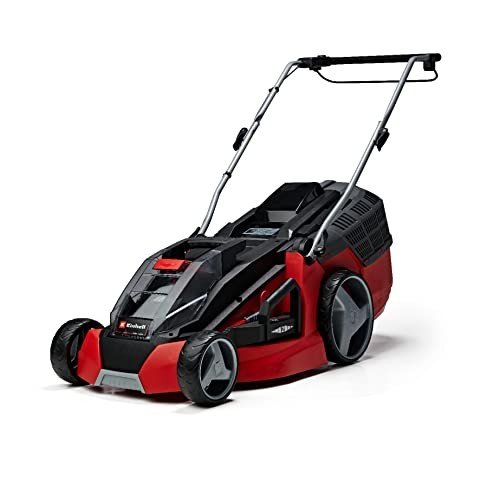The Essential Guide to Power Tools: Unlocking Potential for DIY Projects
Power tools have changed the way both experts and DIY lovers approach jobs ranging from woodworking to metalworking and beyond. With a vast variety of alternatives readily available on the marketplace, it's necessary to understand the different types of power tools, their applications, and how to utilize them safely and efficiently. This comprehensive guide will offer important insights into the world of power tools, assisting you pick the ideal ones for your tasks while guaranteeing safety and efficiency.
Types of Power Tools
Power tools can be broadly categorized into 2 categories: corded and cordless. Each classification has its advantages and downsides, making them suitable for various applications. Below is a breakdown of typical power tools you may think about.
Corded Power Tools
Corded tools are powered through an electrical outlet, using constant power without the need for battery management. Below are some common corded power tools:
Drills
- Application: Drilling holes and driving screws.
- Functions: Typically have greater torque and continuous power.
Saws
- Types: Circular saw, jigsaw, band saw.
- Application: Cutting wood, metal, and other materials.
- Features: Greater cutting power and precision.
Grinders
- Application: Grinding, sharpening, and polishing.
- Features: High RPM (revolutions per minute) for efficient work.
Planers
- Application: Smoothing wood surfaces.
- Functions: Adjustable depth for various densities.
Cordless Power Tools
Cordless tools operate on rechargeable batteries, using convenience and portability. Here are a number of key cordless tools:
Cordless Drills
- Application: Drilling and screwing without the hassle of cables.
- Features: Lightweight and easy to maneuver.
Reciprocating Saws
- Application: Demolition and cutting in tight spaces.
- Features: Versatile blade choices for various products.
Impact Drivers
- Application: Fastening screws and nuts, providing high torque.
- Features: Compact and designed for sturdy use.
Cordless Nailers
- Application: Driving nails quickly without manual effort.
- Features: Ideal for framing, roof, and ending up jobs.
Security Tips for Using Power Tools
Utilizing power tools features intrinsic dangers. It is essential to follow safety practices to minimize the opportunity of accidents. Here are some essential security tips:
Wear Personal Protective Equipment (PPE):
- Safety glasses to safeguard eyes.
- Hearing protection when necessary.
- Gloves ideal for the job at hand.
- Read the Manual:
Familiarize yourself with the tool's functions, abilities, and restrictions. - Examine Tools Regularly:
Check for any signs of wear or damage before use. - Operate in a Clean Area:
Keep the work space arranged to prevent trip risks. - Utilize the Right Tool for the Job:
Ensure the tool is designed for your specific project to prevent abuse. - Disconnect When Changing Accessories:
Always detach tools from source of power when altering bits or blades to avoid unintentional activation.
Best Practices for Maintaining Your Power Tools
Appropriate upkeep extends the life of power tools, guaranteeing they carry out effectively when needed. Below are some best practices:
- Clean After Each Use:
Remove dust, debris, and any other impurities. - Store Properly:
Keep tools in a dry, safe and secure area, preferably with protective sheathing. - Check and Replace Batteries:
Regularly examine rechargeable batteries and replace them as needed. - Sharpen Blades:
Keep cutting edges sharp for much better performance and security. - Arrange Professional Servicing:
Occasionally get your tools serviced by an expert, specifically if they are utilized frequently.
Often Asked Questions (FAQs)
1. What are the main differences between corded and cordless power tools?
Corded tools use constant power and are typically more powerful, making them perfect for durable tasks. Cordless tools, alternatively, offer higher movement and convenience.
2. How do I select the right power tool for my project?
Think about the type of work, required power, and whether portability is important. Reading reviews and getting recommendations can likewise help guarantee you choose the suitable tool.
3. How typically should I carry out upkeep on my power tools?
It depends on usage frequency. For regularly used tools, an extensive cleaning and assessment after every usage is recommended. content utilized tools can be examined and preserved quarterly.
4. Are there battery types I should choose for cordless tools?
Lithium-ion batteries are generally preferred for their lighter weight and longer life compared to nickel-cadmium batteries.
5. Is it safe to use power tools in damp conditions?
No, running power tools in wet conditions poses significant threats of electric shock. Always guarantee your workspace is dry.
Power tools have become essential in numerous applications, from hobbyist woodworking to professional building. Comprehending the types of tools offered, sticking to security procedures, and maintaining them effectively guarantees that these tools can be utilized to their full potential. As innovation advances, power tools continue to develop, making it important for users to stay informed about the most current innovations and best practices. When used responsibly, power tools can change any job into a masterpiece.
Table: Overview of Common Power Tools
| Tool Type | Application | Source of power | Secret Features |
|---|---|---|---|
| Corded Drill | Drilling/Screwing | Corded | Constant power, high torque |
| Circular Saw | Cutting | Corded | Precision cutting, various sizes |
| Cordless Drill | Drilling/Screwing | Cordless | Light-weight, portable |
| Reciprocating Saw | Demolition/Cutting | Cordless | Versatile for various materials |
| Effect Driver | Fastening | Cordless | High torque, compact design |
| Grinder | Grinding/Sharpening | Corded | High RPM for efficient work |
| Cordless Nailer | Driving Nails | Cordless | Quick attaching, no handbook effort |
By empowering people with the knowledge of selecting and properly utilizing power tools, this guide aims to enhance performance, security, and overall fulfillment in DIY and expert projects alike.

